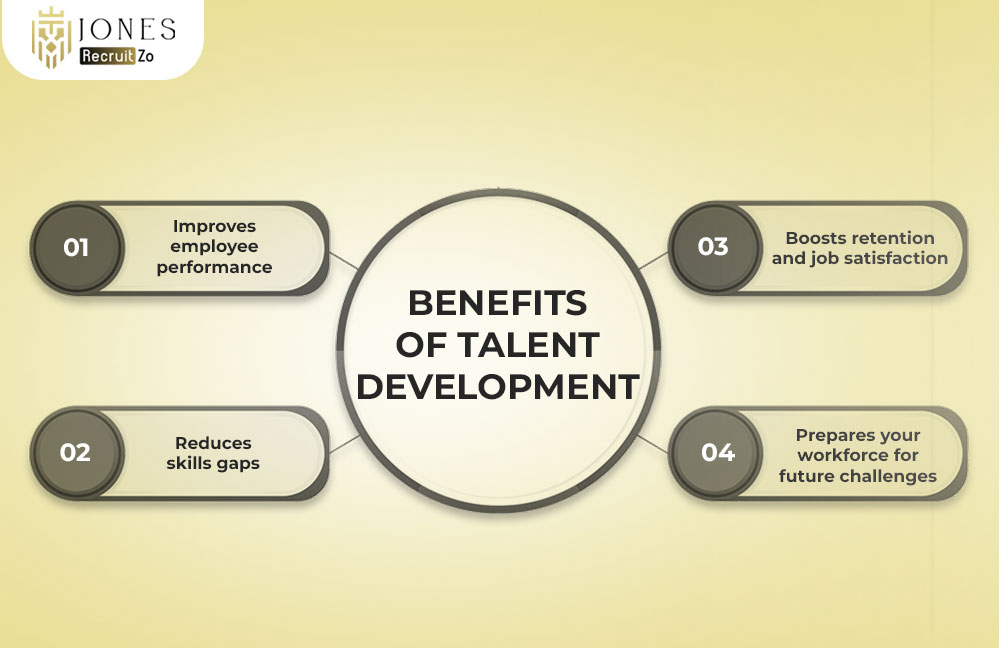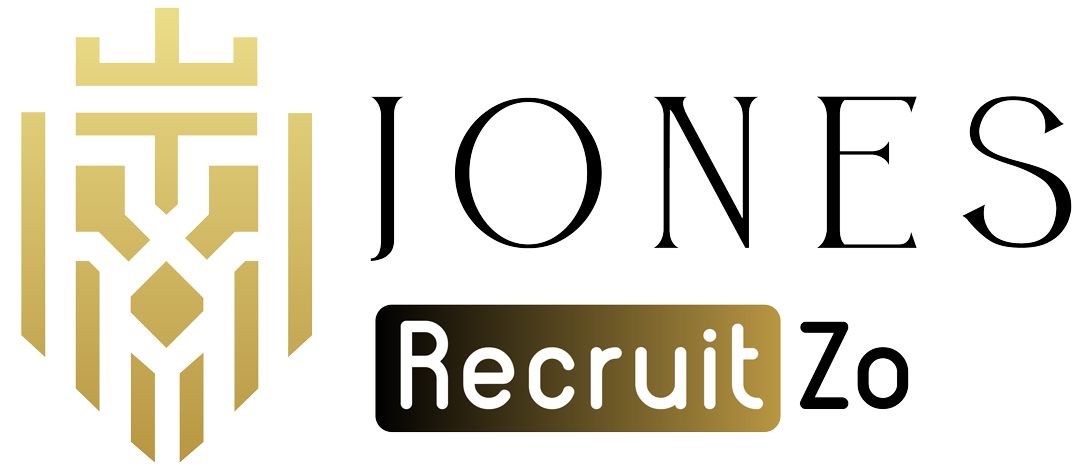What Is Talent Development?
Talent development means strategically enhancing employees’ skills, knowledge, and capabilities in alignment with business goals. It is a mixture of learning opportunities, mentoring, coaching, performance support, and possibly more, enabling individuals to grow in their present positions while developing their capacity to face new challenges in the times to come.
Companies that focus heavily on talent development stay far ahead of the competition and find it easy to withstand changes. Talent development ensures that organisations are always helping their teams through formal training and/or informal personalised learning to perform, lead, and achieve.
Benefits of Talent Development

Talent development delivers immense value not just to individuals but also to the organisation as a whole. Here are some of the key advantages:
Improves employee performance
Continuous training and development help an employee develop confidence in himself and acquire newer skills to perform better at his work. With continuous learning, teams are able to stay competent, productive, and aligned with changing business goals.
Reduces skills gaps
Talent development identifies areas of missing skills and plugs such skill gaps with available training programmes so that the organisation never faces a lack of core competencies.
Boosts retention and job satisfaction
When employees feel they are growing for themselves and supporting their future, they will stay. When development programmes invest in employee potential, they boost morale and satisfaction and promote loyalty.
Prepares your workforce for future challenges
Change is easier to anticipate when your workforce is ready for the future. Talent development ensures that your team will be able to shoulder leadership responsibilities, accept changes in emerging technologies, and handily tackle market dynamics.
Difference Between Talent Management vs Talent Development
Although talent management and talent development are both concerned with human resources strategies, they fulfil divergent purposes. Talent management, being a broader concept, is recruiting, onboarding, retaining, and strategic workforce planning. Talent development is a more focused set of activities enhancing the capability and performance of employees.
In short, talent management is about sourcing and retaining the right persons, whereas talent development is about escalating those persons’ capacity and success inside the organisation.
Key Components of Talent Development

Talent development is most effective when it’s structured around a few essential components that support both individual and organisational growth.
Learning and Development (L&D)
This entails workshops, e-learning, certifications, or on-the-job training that improves technical, soft, and leadership skills. Therefore, the very cornerstone of any talent development plan is a sound L&D strategy.
Career Pathing
The employees want to see there is a future within the company. Career pathing helps the employees visualise how they can grow, what they can aim for, and the skills they will need to do it.
Performance Management
Through the feedback and regular check-ins, they can get to know their current standing and in what aspects they need to improve. It is a continuous process of setting goals, assessing, and development.
Coaching and Mentoring
Mentoring allows junior employees to connect with senior experts for guidance, knowledge transfer, and career guidance. Coaching, on the other hand, can focus on addressing specific skill or leadership development objectives.
Succession Planning
They prepare employees to assume key roles in the future to ensure business continuity and demonstrate investment in internal talent for the long haul.
How to Build a Talent Development Programme?
Creating an effective talent development strategy involves aligning it with your business objectives and employee needs. Here’s how to get started:
Identify Business Needs
Understand the current and future goals of your organisation. This helps to determine what skills, and roles have to be strengthened or future-proofed.
Identify upskilling and reskilling opportunities
Identify the skills considered outdated, which are missing, and those that will be needed soon. Upskilling means bolstering existing skills, while reskilling means training an employee for another job function.
Set Clear Goals
Set measurable goals for your development programme -whether it be increasing team productivity, getting leaders ready, or reducing skill gaps. They channel your efforts and measure success.
Design Tailored Learning Programmes
Generic training will not suit all enterprises. Create customised learning pathways that take into consideration different roles, career levels, and individual learning styles.
Create a culture of continuous learning
Give your employees the impetus to learn on their own by making development part of today’s work life. Offer all sorts of motivators, acknowledge great achievements, and provide a discovery platform.
Monitor, evaluate & improve
Regularly assess the effectiveness of your development programmes using feedback, performance data, and KPIs. Be ready to adjust strategies to ensure continuous improvement.
FAQs
1) What Is Talent Development?
Talent development is the structured process of improving employee skills and performance through learning, mentoring, and career planning.
2) What are the benefits of talent development?
It improves performance, reduces skill gaps, increases retention, and prepares the workforce for future challenges.
3) What is the difference between talent management vs talent development?
Talent management covers the full employee lifecycle, while talent development focuses on enhancing existing employee capabilities.
4) How to Build a Talent Development Programme?
Identify business needs, recognise skill gaps, set development goals, build tailored programmes, foster a learning culture, and evaluate results continuously.















